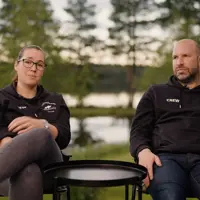In the Swedish school system, children go to school for at least ten years from the year they turn six, as mandated by the Swedish Education Act (link in Swedish). Sweden's long focus on education is quoted as one of the explanations for the country's capacity for innovation.
Nursery school
Förskola (nursery school, or preschool) is provided by Swedish municipalities for children ages one to five. The amount of municipal subsidy for preschool depends on the child’s age and whether the parents work, study, are unemployed or on parental leave for other children.
Swedish preschool emphasises the importance of play in a child’s development, with a curriculum aiming to ensure children’s individual needs and interests. Gender-aware education is increasingly common, striving to provide children with the same opportunities in life regardless of gender.
Compulsory schooling
Swedish compulsory schooling consists of four stages: förskoleklass (‘preschool year’ or year 0), lågstadiet (years 1–3), mellanstadiet (years 4–6) and högstadiet (years 7–9). Children between ages six and thirteen are also offered out-of-school care before and after school hours.
Compulsory education also includes sameskolor (Sami schools) for children of the indigenous Sami people.
Upper secondary school
Gymnasium (upper secondary school, sixth form or high school, years 10–12) is optional. There are eighteen regular national programmes of three years to choose from, six of which are preparatory for higher education such as university, and twelve of which are vocational.
While entrance requirements vary between programmes, all of them demand students to have passing grades in Swedish, English and mathematics from their final year of compulsory schooling.
In 2022, about 85 per cent of Swedish ninth-year students qualified for a vocational programme and 81–84 per cent for a national programme. Those whose grades don’t qualify have five so-called introductory programmes to choose from. From these introductory programmes, students can then move on to a national programme.
There are also upper secondary schools for people with intellectual disabilities as well as programme variations targeting for example athletes.
In total, around 69 per cent of upper secondary students received a leaving qualification in 2022 (diploma).













